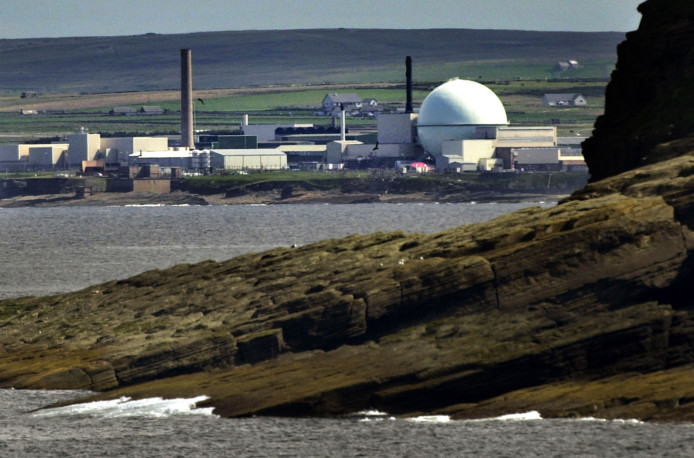The Scottish Government has unveiled plans to scrap a law that spares Ministry of Defence (MoD) site radioactivity from being monitored.
Environment Secretary Richard Lochhead announced the proposals in a statement to Parliament about an incident at the Vulcan Nuclear Reactor Test Establishment at Dounreay.
On Thursday the UK Government said a radioactive discharge was found at Dounreay’s Vulcan reactor in 2012, leaving Scottish ministers furious about what they called a “veil of secrecy”.
Currently, radioactivity within MoD bases in Scotland is not subject to regulation by the Scottish Environment Protection Agency (Sepa).
The Scottish Government said the plans were relevant “in practice” to five MoD sites, including RM Condor near Arbroath.
Mr Lochhead said: “By removing crown exemption Sepa will be able to regulate all of Scotland, and in this situation they would have had the power to demand that action was taken rather than the MoD being able to withhold vital information.”
UK Defence Secretary Philip Hammond told the House of Commons that “low levels of radioactivity were detected” in the cooling waters of a reactor at the Naval Reactor Test Establishment in 2012.
He said it was such a “low level” event that an announcement was not required and his department informed Sepa later that year.
Sepa said it was told on a confidential basis and as there was no safety risk decided not to share details with the Scottish Government.
In a letter to First Minister Alex Salmond, Mr Hammond insisted there was no safety risk and said the MoD had acted “quite properly”.
He added: “I can assure you that we are engaging the local community to answer any questions they might have. (Minister for defence equipment) Philip Dunne spoke to the chair of the Dounreay Stakeholder Group last week to provide an initial brief.
“Our experts will be briefing the group in person tomorrow, and we wrote last week to both the constituency MP, John Thurso, and the constituency MSP, Rob Gibson, to offer them a visit to the site to find out for themselves how we manage it.”
An MoD spokesman said: “The Defence Secretary has written to the First Minister to make clear that while last week’s statement was about operational submarines and not the test reactor at Dounreay, there was no leak from the reactor and discharges have been less than half the regulatory limit.
“The Defence Secretary also told the First Minister that the MoD has no authority to stop Sepa informing Scottish ministers and that Sepa themselves took the decision not to inform Scottish ministers, given the absence of any safety concern.
“Mr Hammond also outlined how these figures are not secret as information on discharges from Dounreay is published annually in the Radioactivity in Food and the Environment publication, co-authored by Sepa, and is available on the Sepa website. The Naval Reactor Test Establishment at Dounreay is and remains a safe and low risk site.”
